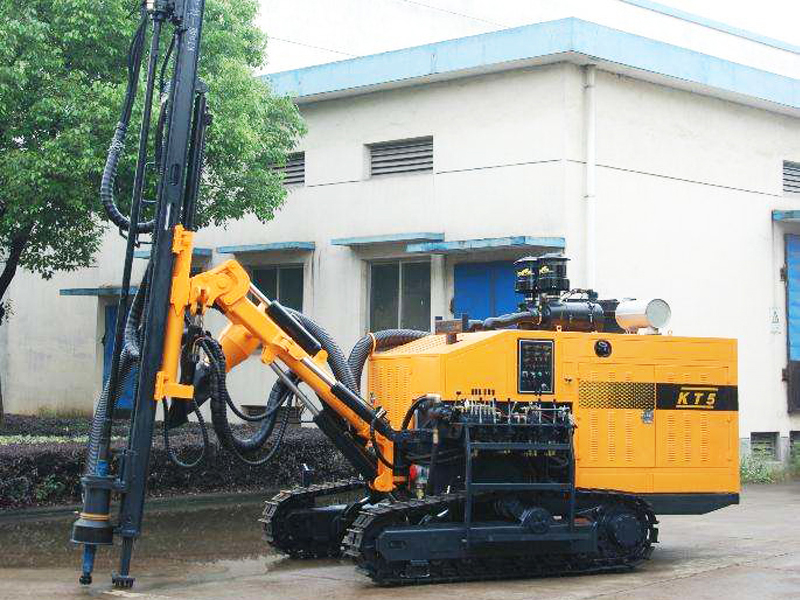Principles and advantages of down-the-hole drilling rigs

Down-the-hole drilling rigs can drill holes in rocks of medium hard or above (f≥8). Like the rock drill, it has the process of impacting, rotating, discharging and advancing the rock drilling hole. The difference is the impact mechanism of the down-the-hole drilling rig. The extension and continuous advancement. The down-the-hole drill is named after the impactor dives into the hole, and has the following advantages in use:
1. There is no energy transmission loss, the impactor directly acts on the drill bit, no drill pipe is required to transmit impact energy, and the drilling speed is not affected by the depth of the hole.
2. The hole is straight, the drill pipe has high rigidity, does not bear impact force, only transmits torque, and the transmitted shaft pressure is very small. During decompression drilling, there is no need to transmit shaft pressure at all, so the drill pipe is not easy to bend and deform. The blasthole is straight and smooth, especially when there are cracks in the rock, the bevel is inclined or the rock hardness changes, it is better than other drilling methods.
3. The slag discharge is clean, and the motive medium can flush the blast hole after working, which is more clean than other drilling methods and avoids over-drilling.
4. The noise is small, because the impact is carried out at the bottom of the hole, and the noise is smaller than that of the top hammer.
5. Good adaptability. Except for very soft formations, DTH drills are in the best working condition in all rock tissues, and the drilled hole diameter and hole depth are more than top hammer rock drills.
Due to the above advantages, down-the-hole drilling is considered the best choice, and 90% of quarries use down-the-hole drilling.

